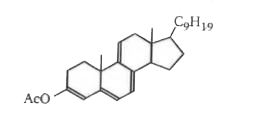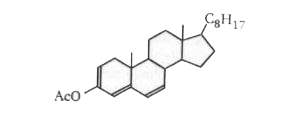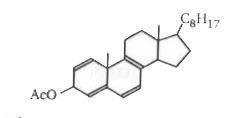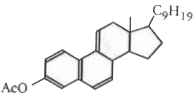Al and Ga are trivalent in their compounds but monovalent compounds are the most stable down the 13th group. Why?
To understand why aluminum (Al) and gallium (Ga) are trivalent in their compounds but their monovalent compounds are the most stable down the 13th group, we can break down the explanation into a series of steps:
1. Identify the Group and Elements:
The elements in the 13th group of the periodic table are Boron (B), Aluminum (Al), Gallium (Ga), Indium (In), and Thallium (Tl).
2. Electronic Configuration:
- Aluminum (Al): 1s² 2s² 2p⁶ 3s² 3p¹
- Gallium (Ga): (Ar) 3d¹⁰ 4s² 4p¹
- Thallium (Tl): (Xe) 4f¹⁴ 5d¹⁰ 6s² 6p¹
3. Trivalent and Monovalent States:
- Al and Ga typically exhibit a +3 oxidation state (trivalent) in their compounds.
- However, as we move down the group, the +1 oxidation state (monovalent) becomes more stable.
4. Inert Pair Effect:
- The inert pair effect refers to the tendency of the outermost s electrons (ns²) to remain non-ionized and not participate in bonding as we move down the group.
- For Ga and Tl, the presence of filled d orbitals (3d for Ga and 4f for Tl) leads to poor shielding of the nuclear charge. This means that the effective nuclear charge felt by the outermost electrons increases.
5. Impact of D Orbitals:
- The d orbitals are larger and provide poor shielding due to their diffuse nature. As a result, when one electron is removed from the p orbital (6p¹ in Tl), the effective nuclear charge increases on the ns² electrons (6s² in Tl).
- This increased nuclear attraction makes it more difficult to remove the s electrons, stabilizing the +1 oxidation state.
6. Stability Order:
- The stability of the oxidation states can be summarized as follows:
- Al³⁺ > Ga³⁺ > In³⁺ > Tl³⁺ (the +3 oxidation state becomes less stable down the group).
- Conversely, the +1 oxidation state stability increases: Tl⁺ > In⁺ > Ga⁺ > Al⁺.
7. Conclusion:
- Therefore, while Al and Ga can form +3 oxidation states, the +1 oxidation state becomes more stable down the group due to the inert pair effect and increased effective nuclear charge.
The elements in the 13th group of the periodic table are Boron (B), Aluminum (Al), Gallium (Ga), Indium (In), and Thallium (Tl).
- Aluminum (Al): 1s² 2s² 2p⁶ 3s² 3p¹
- Gallium (Ga): (Ar) 3d¹⁰ 4s² 4p¹
- Thallium (Tl): (Xe) 4f¹⁴ 5d¹⁰ 6s² 6p¹
- Al and Ga typically exhibit a +3 oxidation state (trivalent) in their compounds.
- However, as we move down the group, the +1 oxidation state (monovalent) becomes more stable.
- The inert pair effect refers to the tendency of the outermost s electrons (ns²) to remain non-ionized and not participate in bonding as we move down the group.
- For Ga and Tl, the presence of filled d orbitals (3d for Ga and 4f for Tl) leads to poor shielding of the nuclear charge. This means that the effective nuclear charge felt by the outermost electrons increases.
- The d orbitals are larger and provide poor shielding due to their diffuse nature. As a result, when one electron is removed from the p orbital (6p¹ in Tl), the effective nuclear charge increases on the ns² electrons (6s² in Tl).
- This increased nuclear attraction makes it more difficult to remove the s electrons, stabilizing the +1 oxidation state.
- The stability of the oxidation states can be summarized as follows:
- Al³⁺ > Ga³⁺ > In³⁺ > Tl³⁺ (the +3 oxidation state becomes less stable down the group).
- Conversely, the +1 oxidation state stability increases: Tl⁺ > In⁺ > Ga⁺ > Al⁺.
- Therefore, while Al and Ga can form +3 oxidation states, the +1 oxidation state becomes more stable down the group due to the inert pair effect and increased effective nuclear charge.
Topper's Solved these Questions
- P-BLOCK ELEMENT (BORON AND CARBON FAMILY)BOOK - RESONANCE ENGLISHCHAPTER - P-BLOCK ELEMENT (BORON AND CARBON FAMILY)EXERCISE - Bord level Exercise Type (1): Very Short Answer Type Questions
6 Videos
- P-BLOCK ELEMENT (BORON AND CARBON FAMILY)BOOK - RESONANCE ENGLISHCHAPTER - P-BLOCK ELEMENT (BORON AND CARBON FAMILY)EXERCISE - Bord level Exercise Type (2): Short Answer Type Questions
4 Videos
- P-BLOCK ELEMENT (BORON AND CARBON FAMILY)BOOK - RESONANCE ENGLISHCHAPTER - P-BLOCK ELEMENT (BORON AND CARBON FAMILY)EXERCISE - PART - III : OLYMPIAD PROBLEMS (PREVIOUS YEARS) STAGE - V (INTERNATIONAL CHEMISTRY OLYMPIAD (IChO)) Problem 3
8 Videos
- P BLOCK ELEMENTSBOOK - RESONANCE ENGLISHCHAPTER - P BLOCK ELEMENTSEXERCISE - PART -II
23 Videos
- P-BLOCK ELEMENTS (HALOGEN & NOBLE GASES)BOOK - RESONANCE ENGLISHCHAPTER - P-BLOCK ELEMENTS (HALOGEN & NOBLE GASES)EXERCISE - APSP PART-3
22 Videos
Similar Questions
Knowledge Check
Which of the following compounds is most stable ?
A B
B C
C D
D
Which of the following compound is most stable ?
A B
B C
C D
D
Which of the following compounds are in their most stable tautomeric forms?
A B
B C
C D
D
Among the following the most stable compound is
View SolutionWhich of the following compound is thermally most stable ?
View SolutionWhich of the following ketonic compound is the least stable?
View SolutionSelect the most basic compound.
View SolutionAmong the following compounds, the most basic compound is :
View Solution

